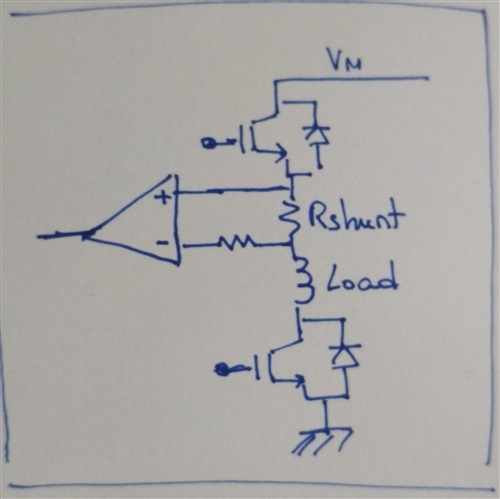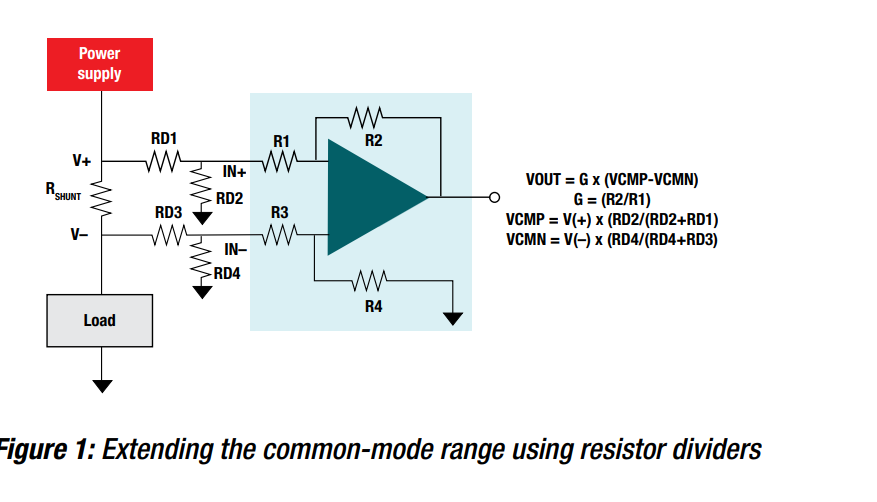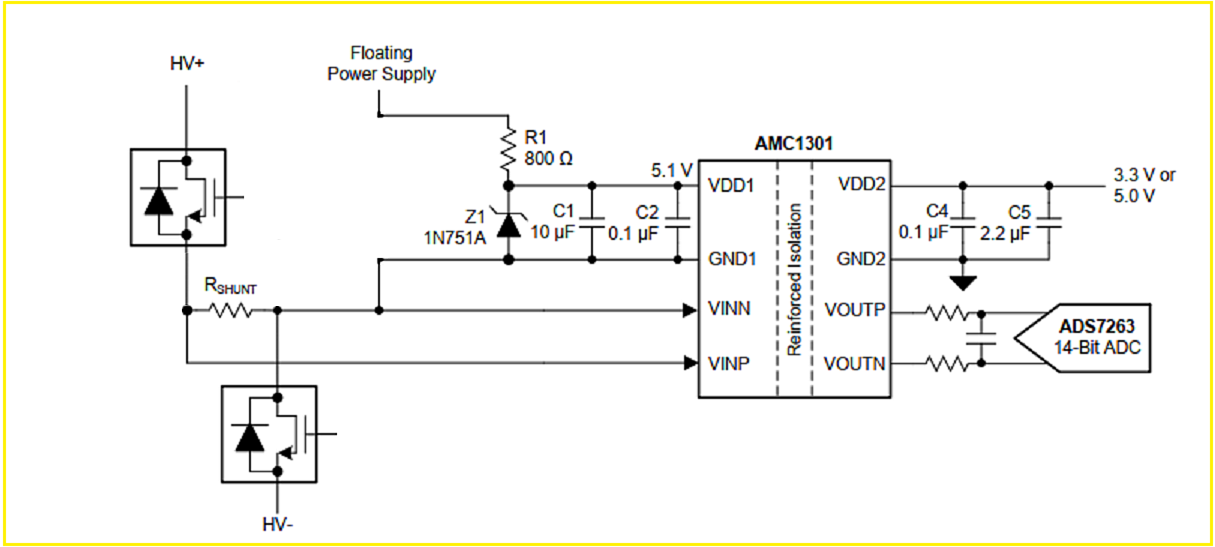Other Parts Discussed in Thread: AMC1300
Hi, I'm a newbie at using this forum to ask questions, so I hope I can express my problem well, and that you can help me.
I am using in a design the amplifier AMC1301 to measure the current that circulates through each of the phases of a motor, in the drawing below I represent the architecture of each of the phases approximately.
My problem is that we can observe that without current circulating, and with a voltage at the input of 0V, the output goes to 2V. I have identified it as a floating input problem, but putting a pulldown resistor has not fixed it. Can there be another cause that we have not identified? Is it not correct to use a pulldown resistor or is there a better architecture?
Thank you very much and best regards.






